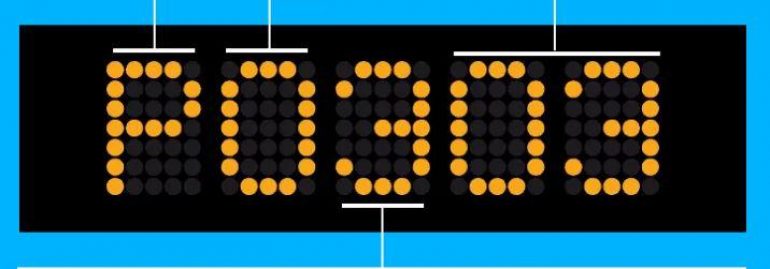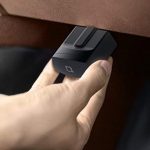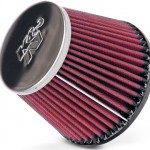In the modern age of automotive technology, vehicles are equipped with complex computer systems that constantly monitor and diagnose various components for optimal performance. One crucial tool in deciphering these diagnostic messages is the On-Board Diagnostics (OBD) scanner.
By understanding the language of OBD scanner codes, car owners and technicians alike can gain valuable insights into their vehicle’s health and potential issues. In this article, we will delve into decoding these codes to provide a comprehensive understanding of your vehicle’s diagnostic messages, allowing for more informed decision-making when it comes to maintenance and repairs.
Introduction to OBD Scanner Codes
Understanding OBD Scanner Codes
When your vehicle’s check engine light comes on, it can be a stressful experience. However, by using an OBD (On-Board Diagnostics) scanner, you can decipher the messages that your car’s computer is sending you. These codes provide valuable insights into what is going on with your vehicle and can help you pinpoint potential issues.
Interpreting the Codes
OBD scanner codes are divided into two categories: generic and manufacturer-specific. Generic codes are standardized across all vehicles, while manufacturer-specific codes are unique to certain car brands. By retrieving these codes from your OBD scanner and referencing a code chart or online database, you can determine the specific problem affecting your vehicle. This information empowers you to take action and address any maintenance or repair needs promptly.
Common OBD Scanner Codes and What They Mean
- P0300 – Random/Multiple Cylinder Misfire Detected: This code indicates that the engine is misfiring at random or on multiple cylinders. Causes can include faulty spark plugs, fuel delivery issues, or a problem with the ignition system.
- P0420 – Catalyst System Efficiency Below Threshold (Bank 1): This code suggests that the catalytic converter is not operating as efficiently as it should be. Potential causes could be a failing oxygen sensor, a leak in the exhaust system, or an issue with the converter itself.
- P0171 – System Too Lean (Bank 1): This code points to a lean fuel mixture in one of the engine’s banks. Possible culprits may include vacuum leaks, clogged injectors, or a malfunctioning Mass Airflow Sensor (MAF).
Diagnosing OBD Scanner Codes: Tips and Techniques
- When faced with an OBD scanner code, the first step is to connect the scanner to your vehicle’s onboard computer system. This will allow you to retrieve the specific trouble code that has triggered the warning light on your dashboard.
- Once you have retrieved the code, it is important to cross-reference it with the manufacturer’s code list or a reliable diagnostic resource. This will help you identify the root cause of the issue and determine what steps need to be taken next.
- Don’t ignore OBD scanner codes – they are valuable insights into your vehicle’s health. Addressing issues promptly can prevent more serious problems down the road and save you time and money in repairs.
Remember, understanding how to interpret these codes is key in maintaining your car’s performance and longevity.
Resetting OBD Scanner Codes: When and How to Clear Them
- To clear OBD scanner codes, it’s important to first diagnose the issue causing the code to appear.
- Once you have resolved the underlying problem, you can reset the codes using an OBD scanner tool.
- Follow the instructions provided with your scanner to effectively clear the diagnostic trouble codes (DTCs).
If you’re unsure about how to go about resetting the codes or if they keep reappearing after being cleared, it may be wise to seek professional help. It’s essential that any issues triggering these codes are properly addressed for optimal vehicle performance.
Understanding the Explanation of OBD Scanner Codes
- OBD scanner codes provide valuable information about your vehicle’s health.
- These codes are alphanumeric combinations that represent specific issues detected by the onboard diagnostic system of your car.
- Each code corresponds to a problem or malfunction within different systems of your vehicle, such as engine, transmission, or emissions.
When you connect an OBD scanner to your car’s port, it retrieves these codes for interpretation. Once deciphered, you can better understand what is causing the check engine light to illuminate or any other warning signs in your vehicle. By knowing the meaning behind these codes, you can take appropriate action to address and resolve the underlying issues before they escalate into more significant problems. Remember that regular maintenance and prompt responses to OBD scanner codes can help keep your vehicle running smoothly and efficiently.
Interpreting OBD Scanner Codes for Accurate Diagnosis
- Understanding the Basics: OBD scanner codes consist of a series of letters and numbers that indicate specific issues within your vehicle’s system. These codes are essential for pinpointing problems accurately.
- Consulting the Code Chart: When you receive an OBD scanner code, refer to your vehicle’s manual or online resources to decipher its meaning. Each code corresponds to a particular problem area, such as engine misfires or sensor malfunctions.
- Seeking Professional Help: If you’re unsure about interpreting OBD scanner codes or dealing with complex issues, it’s best to consult with a professional mechanic. They have the expertise and tools necessary to diagnose and repair your vehicle effectively.
Troubleshooting OBD Scanner Codes: Solving Common Issues
- Check Your Connection: Make sure the OBD scanner is properly connected to the vehicle’s port. A loose connection can lead to inaccurate readings or error codes.
- Update Software: Ensure your OBD scanner has the latest software updates. Outdated software may not be able to read newer diagnostic codes accurately.
- Verify Code Definitions: Double-check the code definitions using a reliable source. Sometimes, different scanners or databases might provide slightly different interpretations of the same code.
Reading OBD Scanner Codes Like a Pro
- Understand the Basics: To read OBD scanner codes like a pro, start by familiarizing yourself with the basics. Each code consists of five characters, with each character serving a specific purpose. The first character identifies the system, while the following four characters provide more detailed information about the issue.
- Interpretation is Key: Knowing how to interpret these codes is crucial for understanding your vehicle’s diagnostic messages. Take note of whether a code starts with “P” (Powertrain), “C” (Chassis), “B” (Body), or “U” (Network). This distinction can help pinpoint which part of your vehicle needs attention.
- Use an OBD Scanner Tool: Invest in an OBD scanner tool to easily read and interpret these codes. These tools vary in complexity, with some providing simple code readings and others offering more detailed diagnostics. By using an OBD scanner tool, you can quickly identify any issues with your vehicle and take appropriate action to address them before they escalate.






